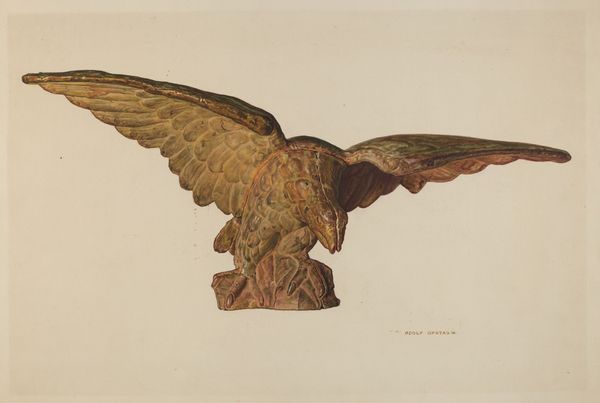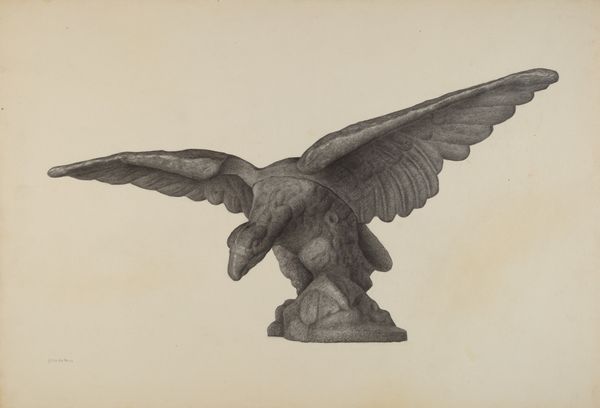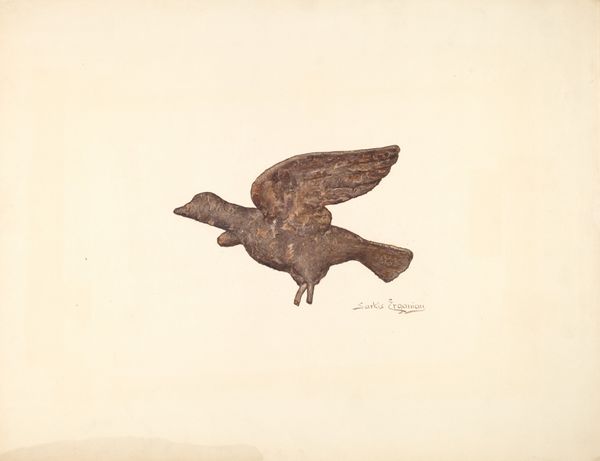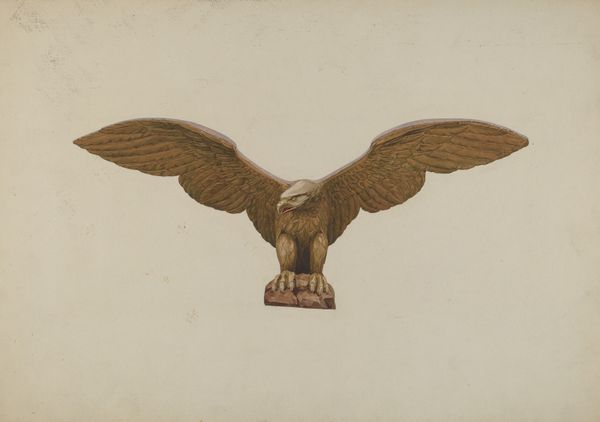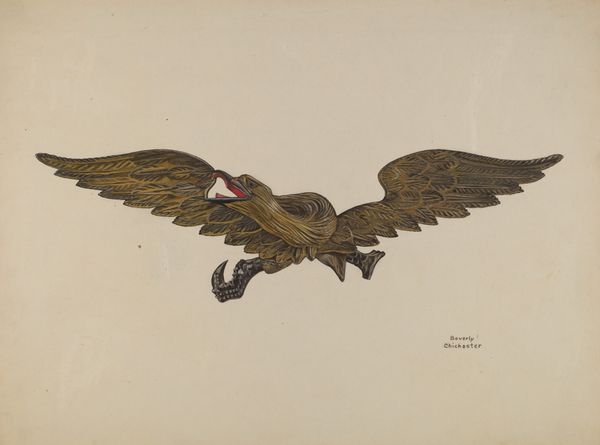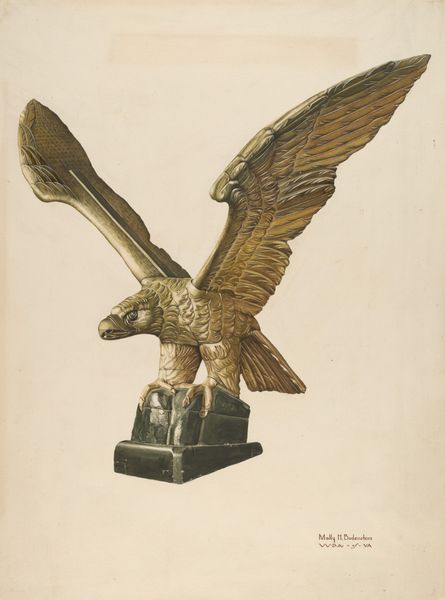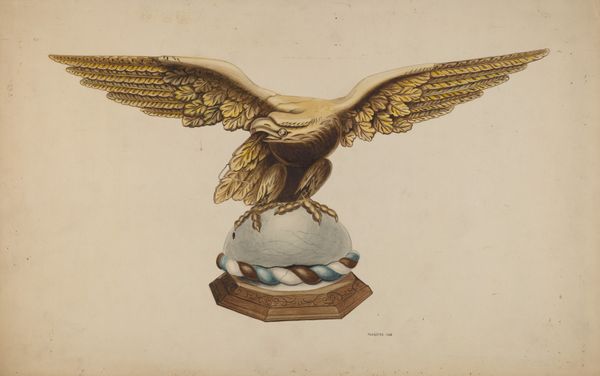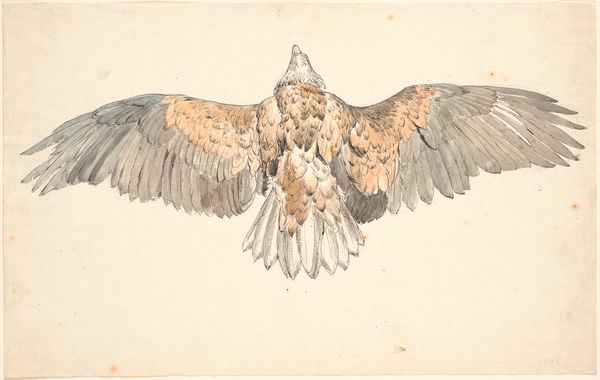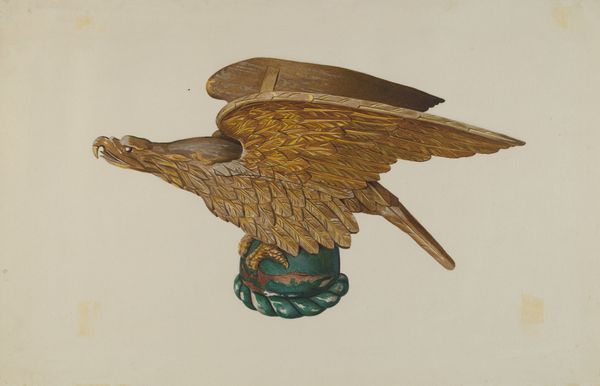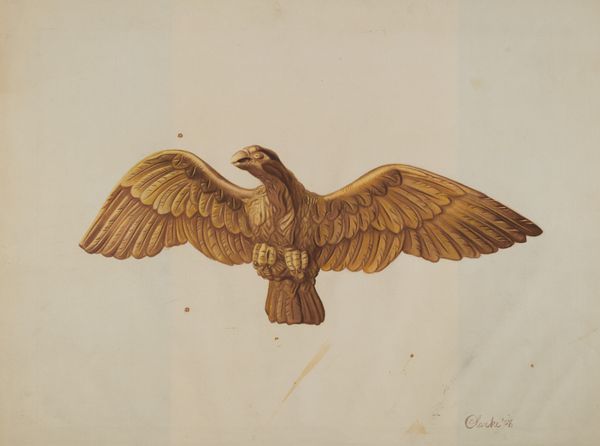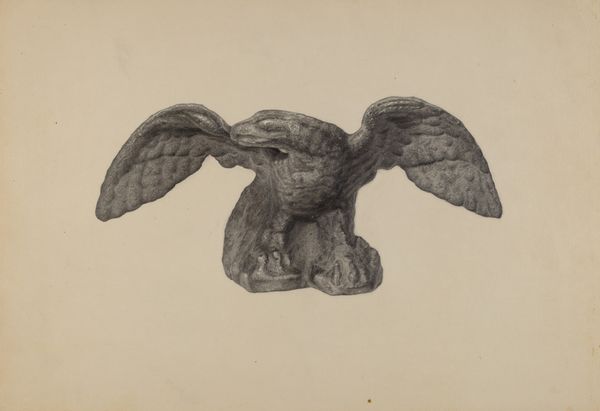
drawing, bronze, watercolor, sculpture
#
drawing
#
landscape
#
bronze
#
figuration
#
oil painting
#
watercolor
#
sculpture
#
watercolour illustration
#
modernism
Dimensions: overall: 37.6 x 50.3 cm (14 13/16 x 19 13/16 in.) Original IAD Object: 23 3/4" wide; 15" high
Copyright: National Gallery of Art: CC0 1.0
Curator: Chris Makrenos created this work, titled "Eagle," around 1939. What strikes me is that the image appears to depict the model of a sculpture rather than a drawing of an actual living bird. Editor: Yes, there’s a formality about it. I see a metallic coolness—the patina is well captured in watercolor with an almost mournful cast, poised somewhere between nobility and decay. I'm curious about the context; was this produced on the eve of the Second World War? Curator: Indeed. The 1930s were a pivotal time globally, and certainly in America. The eagle, as a symbol of national power, takes on different shades of meaning depending on who is looking. Here, perched atop what appears to be the world, or perhaps just an orb, it embodies that sense of dominance. Editor: And there's a certain precarity, isn't there? The watercolor medium is inherently delicate. Pairing it with such a potent emblem feels almost subversive. I can't help but think about the ways symbols are mobilized, manipulated, and often weaponized. There's always an implied threat of violence in iconography. Curator: A useful reminder to critically assess imagery, especially representations of power. I also consider how its display affects the reading; in a governmental building versus a museum, its meaning shifts once again. The eagle motif has long served political narratives across different cultures and throughout time. Editor: Right. In viewing artwork we must not take for granted the role of power; whether in socio-cultural expressions, gender dynamics or in the political messaging surrounding the symbol, such as in this instance. In today's global climate, contemplating visual representations of national identity is vital. Curator: Absolutely, our dialogue has really enhanced my comprehension of how historical forces play out. Editor: Yes, it’s fascinating how art objects reflect, refract, and sometimes resist dominant ideologies and histories. I see such potent visual rhetoric even more sharply now.
Comments
No comments
Be the first to comment and join the conversation on the ultimate creative platform.
